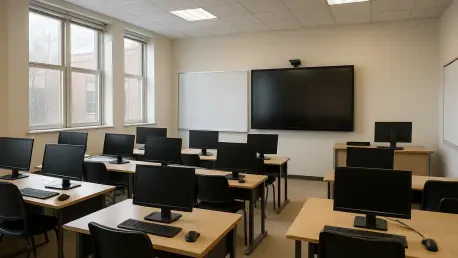In an era where virtual education has become a cornerstone of learning, many parents find themselves grappling with how to best support their children in navigating digital classrooms, especially as the shift from traditional school settings to online platforms introduces both remarkable opportunities and unique challenges. Students often juggle multiple tools and distractions in a space that doubles as their home. As technology continues to reshape education, the role of parental guidance has never been more critical in ensuring academic success and emotional well-being. From mastering digital interfaces to balancing screen time, the journey requires a proactive approach to help young learners adapt and excel. This exploration delves into actionable strategies that empower parents to foster independence, set healthy boundaries, and promote ethical technology use, all while maintaining open communication with educators and students. By addressing these key areas, a solid foundation can be built for children to thrive in an increasingly digital academic landscape.
Empowering Independence with Digital Tools
Navigating the array of platforms and applications that define modern education can be daunting for students, but parents can play a pivotal role in building their confidence. Encouraging children to take the lead in exploring digital tools, such as learning management systems like Canvas, fosters a sense of ownership over their education. A practical step involves asking them to walk through how they access assignments, check deadlines, or view feedback, turning these tasks into moments of discovery rather than frustration. This hands-on approach not only demystifies technology but also equips students with problem-solving skills essential for independent learning. Beyond technical proficiency, this process helps instill a mindset of accountability, as children begin to see themselves as active participants in their academic journey. Expert insights suggest that such empowerment can significantly boost motivation, particularly when students feel in control of their progress within the virtual environment.
Another dimension of fostering independence lies in embracing innovative features that make learning engaging, such as gamification within digital platforms. Many online classrooms offer real-time tracking of grades and achievements, transforming academic progress into a dynamic, game-like experience that can captivate young minds. Parents can enhance this by initiating conversations about how these tools work and celebrating small milestones, like improved scores or completed modules. This approach shifts the focus from mere completion of tasks to a deeper appreciation of growth and effort. Unlike rote learning, gamification taps into a child’s natural inclination for play, making education feel less like a chore and more like an adventure. By highlighting these interactive elements, parents can help sustain interest and drive in a setting that might otherwise feel isolating or monotonous, ensuring that technology serves as a motivator rather than a barrier to success.
Setting Boundaries for Healthy Balance
With digital classrooms accessible around the clock, the risk of overengagement and burnout looms large for many students, making boundary-setting a crucial parental responsibility. Establishing specific times for logging into educational platforms, such as a designated check-in after dinner or a cutoff hour in the evening, can create a clear separation between school and personal life. This structure helps prevent the blurring of lines that often occurs when learning happens in the same space as leisure. Additionally, distinguishing between educational screen time and recreational use ensures that time spent on homework isn’t lumped together with gaming or social media limits. Such clarity allows children to approach their studies with focus, knowing that relaxation awaits once tasks are complete. Experts emphasize that these boundaries not only curb exhaustion but also teach valuable time-management skills that extend beyond the virtual classroom.
Beyond scheduling, emotional well-being must remain a priority when managing technology use in education. Parents should stay attuned to signs of stress or overwhelm, such as reluctance to engage with devices or irritability during study sessions, as these may indicate a need for intervention. Reaching out to teachers for insights or support can provide a fuller picture of a child’s experience, ensuring that challenges are addressed collaboratively. This vigilance extends to encouraging breaks and offline activities that recharge young learners, countering the sedentary nature of online schooling. Unlike rigid rules, this approach requires flexibility to adapt to a child’s evolving needs, balancing academic demands with mental health. By modeling healthy habits and maintaining an open dialogue about technology’s role, parents can help create an environment where digital learning is sustainable, reducing the risk of fatigue while fostering resilience in the face of virtual challenges.
Promoting Ethical Use of Technology
As digital tools like generative AI become more integrated into education, guiding children on their responsible use emerges as a pressing concern for parents. Open conversations about leveraging such technology as a resource—rather than a shortcut for completing assignments—can shape ethical habits early on. Encouraging students to view AI as a brainstorming partner or editing aid, similar to seeking input from a peer, helps maintain academic integrity. Many platforms now include plagiarism-detection features, which serve as both a safeguard for educators and a reminder for students to prioritize originality. Highlighting these tools during discussions can reinforce the importance of proper citation and authentic work. This guidance ensures that technology enhances learning without undermining the development of critical thinking skills, preparing students to navigate future innovations with a strong moral compass.
Equally important is addressing the broader implications of technology in academic settings, where misuse can have lasting consequences. Parents should explore with their children the potential pitfalls of over-reliance on digital aids, emphasizing that true learning comes from effort and engagement with material. Discussions can also cover the permanence of online actions, as content shared or submitted in digital classrooms often leaves a trace. Unlike casual internet use, academic environments demand a higher standard of accountability, and instilling this awareness helps students make informed choices. By framing technology as a tool for growth rather than a crutch, parents can cultivate a mindset of responsibility that extends beyond schoolwork. This proactive stance not only mitigates risks associated with modern tools but also equips young learners to handle the ethical dilemmas they may encounter in an increasingly connected world.
Building Communication and Collaboration
Effective communication forms the backbone of success in digital learning environments, and parents can facilitate this by encouraging active engagement with educators and peers. Many online platforms offer features like chat functions or discussion boards, which provide quick access to instructors for content-related queries. Viewing a child’s participation in these spaces as a positive sign of involvement can reinforce their willingness to seek help when needed. Parents can support this by periodically checking in on how these interactions are going, ensuring that technology serves as a bridge rather than a barrier to connection. This approach underscores the shared responsibility of academic achievement, often described as a triangle of trust among parents, teachers, and students, where each plays a vital role in fostering a supportive learning ecosystem.
Beyond digital interactions, maintaining an ongoing dialogue about online behavior adds another layer of collaboration. Parental control tools alone cannot distinguish whether a child is using social apps for school discussions or leisure, highlighting the need for conversations that go beyond monitoring. Asking open-ended questions about how technology is used for learning can reveal insights into a student’s habits and challenges, paving the way for tailored guidance. Unlike top-down rules, this method builds mutual understanding, allowing parents to address specific concerns while respecting a child’s perspective. Emphasizing the importance of purposeful engagement online helps students navigate digital classrooms with clarity and intention. This collaborative spirit not only strengthens relationships but also ensures that virtual education remains a space of growth, where communication acts as the cornerstone of overcoming obstacles.
Reflecting on Strategies for Lasting Impact
Looking back, the journey of supporting children in digital classrooms revealed a blend of proactive measures that paved the way for success. Encouraging independence through hands-on exploration of platforms empowered students to take charge of their learning with confidence. Setting structured boundaries around technology use proved instrumental in preventing burnout, while vigilant attention to emotional cues ensured well-being remained central. Discussions on ethical technology use, particularly with tools like AI, helped instill accountability that shaped responsible habits. Meanwhile, fostering communication bridged gaps between home and virtual school, creating a network of support through dialogue and collaboration. Moving forward, parents were equipped to adapt these strategies, focusing on evolving needs by staying engaged with educators and prioritizing balance. By building on these foundations, the path was cleared for sustained academic and personal growth in an ever-changing digital landscape.









